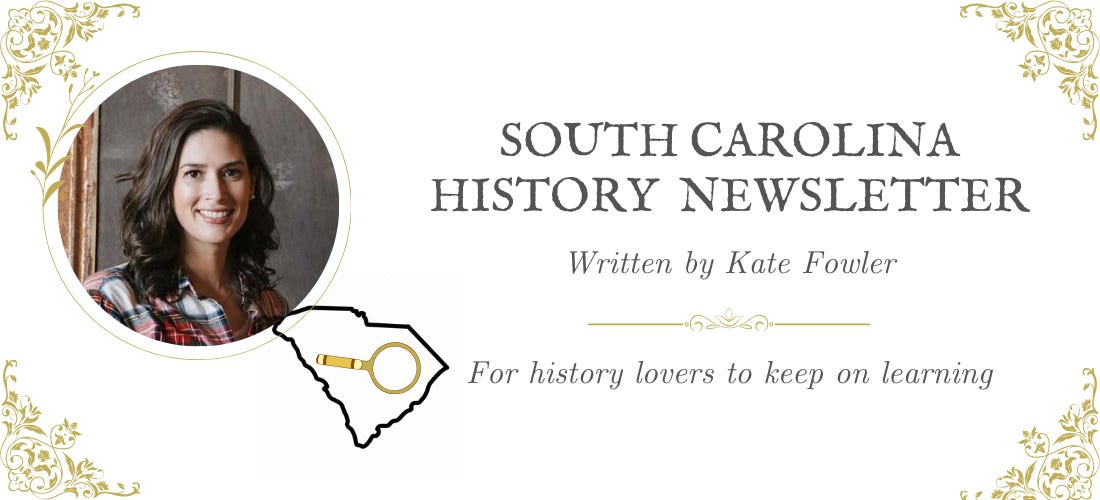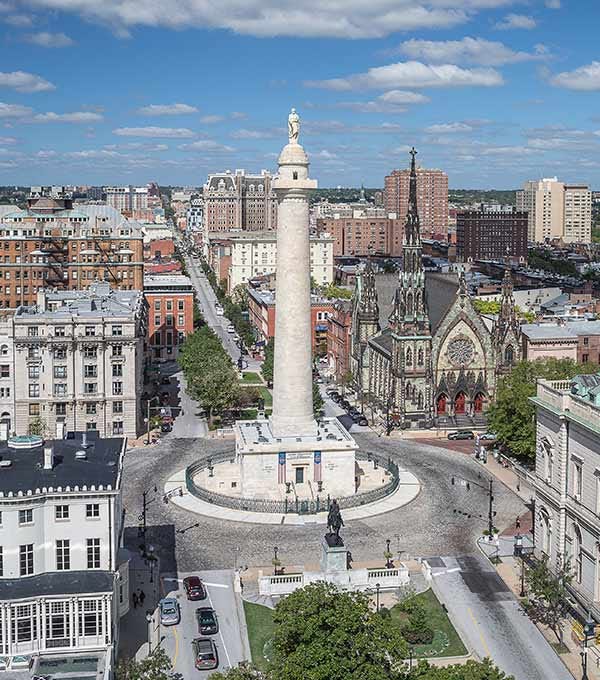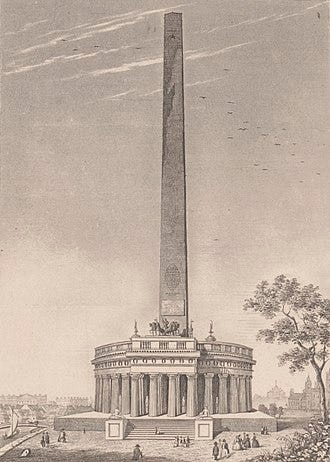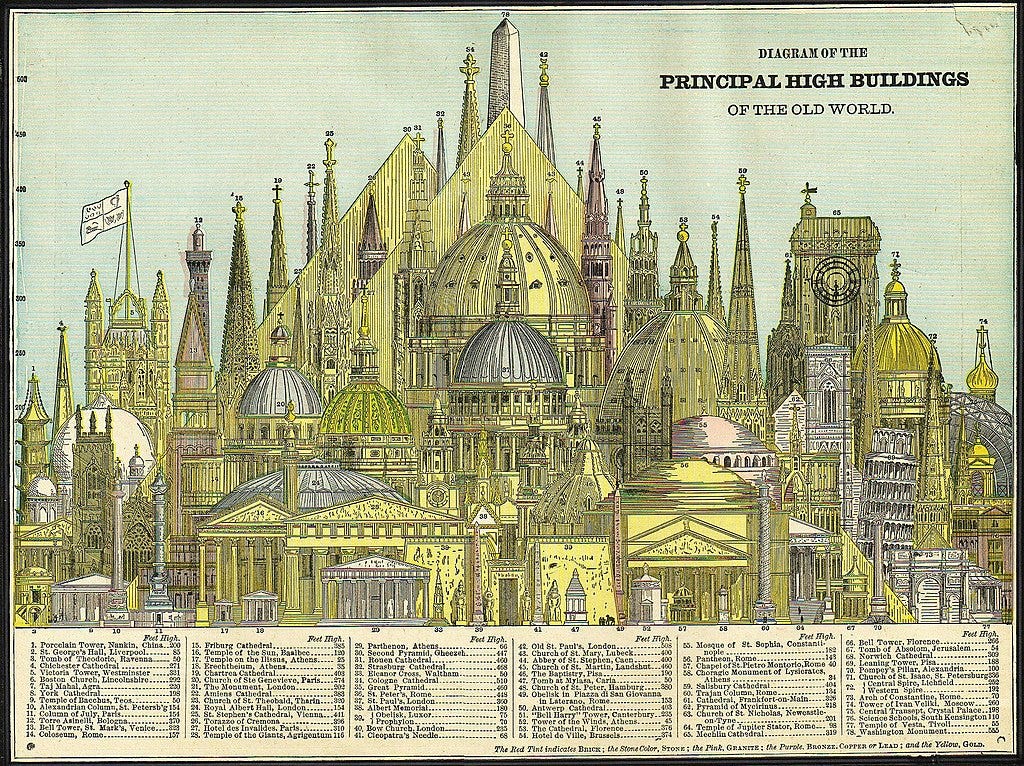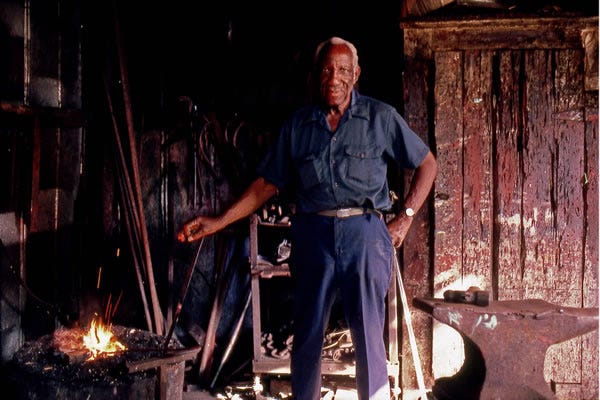#28: The architect of the Washington Monument, a master blacksmith, and a Redcliffe Plantation Open House
For South Carolina history lovers far and wide! Enjoy weekly SC history and upcoming SC historical events
Dear reader,
Welcome to Newsletter #28 of The South Carolina History Newsletter! I’m so happy you’re here.
3/8 update: I typically do my “welcome” to our new subscribers here, but Substack is *still* doing their site maintenance (this is day #2), so unfortunately, I can’t access my dashboard. Argh. I shall acknowledge all you wonderful people in tomorrow’s newsletter, when hopefully the dashboard will be back up and running! :)
I hope you enjoy today’s newsletter, and as always, please feel free to reply to this email with your ideas and suggestions on South Carolina history you’d like to learn more about. I’m only a click away.
Additionally, please join us & keep the conversation going by becoming a member of our SC History Newsletter Facebook Community here! I can’t wait to meet you.
And now, let’s learn some South Carolina history!
Yours truly,
Kate
(Writing from Greenville, SC)
3 ➳ Upcoming SC History Events
While I have curated the following 3 events below to feature in today’s newsletter, please click here to visit my SC History Events Calendar that organizes all the events I have featured in the newsletter to date, as well as others I have discovered. Please let me know if you’d like to add an event to the list! Reply to this email or send me a note at schistorynewsletter@gmail.com.
I.
Saturday, March 16th from 10:00 am - 3:00 pm | “Redcliffe Plantation Open House: Field School, Archaeology, and Book Talk” | Redcliffe Plantation State Historic Site | Beech Island, SC | FREE with admission: Park admission is free. House tours are $10 for adults; $6 for SC Seniors; $5 for children ages 6-15; children age 5 and under are free.
“Join Redcliffe on Saturday, March 16th for a FREE day of programming! Visitors will learn about the HBCU Field School of South Carolina State University and their recent work at Redcliffe Plantation. Dr. Whitney Stewart will also be giving a presentation on her newly published book, This Is Our Home: Slavery and Struggle on Southern Plantations, which features Redcliffe. Copies will be available for purchase on-site. Tours of the historic structures will also be available periodically. RSVP is encouraged at redcliffe@scprt.com.”
II.
Saturday, March 16th from 1:00 - 3:00 pm | “Getting to Know FamilySearch Webinar - African American Genealogy” | International African American Museum | Charleston, SC | FREE & Open to the Public (Attend virtually or live)
“Are you familiar with the platform of FamilySearch? This innovative organization is dedicated to assisting individuals in their genealogical quests. The Center for Family History’s upcoming webinar showcases a panel of distinguished experts, poised to guide attendees through the abundant resources offered by FamilySearch, particularly emphasizing African American genealogy.
The panel will impart valuable insights on adeptly navigating and utilizing the extensive collections and databases available on the platform. They will spotlight specific tools and strategies meticulously tailored for tracing African American lineage. This session is meticulously crafted to empower researchers with the requisite knowledge and skills, enabling them to effectively explore and unearth their African American heritage through the robust capabilities of FamilySearch.
Panelists: Brian Sheffey, Julia A. Anderson, and Thom Reed.”
III.
Sunday, March 17th from 2:00 - 4:00 pm | “Battlefield Walk: Sieges of Ninety Six” | Ninety Six National Historic Site | Ninety Six, SC | FREE & Open to the public
“Visit the Ninety Six National Historic Site for a battlefield walk about the Ninety Six sieges on Sun., Mar. 17 from 2-4 p.m. For more information, email Durant Ashmore at durantashmore@aol.com. 1103 Highway 248 S., Ninety Six, SC”
2 ➳ SC History Fun Facts
I.
Did you know that South Carolinian Robert Mills, was the original designer of the Washington Monument in Washington D.C.?
Robert Mills (1781-1855) is believed to be the first native-born professionally trained American architect, and hailed from Charleston, South Carolina. His style of architecture was neoclassical — “partly Palladian, Georgian, and Greek Revival.” He was also influenced by Jeffersonian architecture and helped create a “distinctive brand of the federal style.” Mills designed many important and note-worthy early American buildings throughout Philadelphia, Georgia, Maryland, and South Carolina, his home state. He is most famous for designing the Washington Monument in Washington, D.C.
Mills studied in Charleston, SC and was lucky in his early career to fall under the tutelage of his mentor, Irish architect James Hoban. Mills later worked with Hoban on his famous commission for the White House. Mills also studied under Benjamin Henry Latrobe, an Anglo-American neoclassical architect, who designed many important American buildings, including the United States Capitol building.
At the end of the Revolutionary War, conversations began about erecting a grand monument to George Washington in the nation’s capitol. These conversations did not reach fruition until many decades later in 1833, when a group of citizens, including Eliza Hamilton (wife of Alexander Hamilton), Dolley Madison (wife of President James Madison), and Louisa Adams (wife of President John Quincy Adams) formed the Washington National Monument Society. The committee embarked on a fundraising campaign for the memorial that lasted 3 years and eventually raised $28,000 in donations (equivalent to roughly $1,000,000 today).
With the money in hand, the committee announced a competition for the monument’s design. Here was the committee’s competition announcement:
It is proposed that the contemplated monument shall be like him in whose honor it is to be constructed, unparalleled in the world, and commensurate with the gratitude, liberality, and patriotism of the people by whom it is to be erected ... [It] should blend stupendousness with elegance, and be of such magnitude and beauty as to be an object of pride to the American people, and of admiration to all who see it. Its material is intended to be wholly American, and to be of marble and granite brought from each state, that each state may participate in the glory of contributing material as well as in funds to its construction.
The design competition began in 1836 and in 1845, Robert Mills was announced as the winner. Mills had designed one of the first monuments to George Washington in Baltimore (see photo below), and he knew the capital city well, having been recently chosen as Architect of Public Buildings for Washington D.C..
Mills’ initial design for the Washington Monument is very different from the monument we know today. The design called for a “circular colonnaded building 250 feet in diameter and 100 feet high from which sprang a four-sided obelisk 500 feet high, for a total elevation of 600 feet. A massive cylindrical pillar 70 feet in diameter supported the obelisk at the center of the building…The top of the portico of the building would feature Washington standing in a chariot holding the reins of six horses.”
Here was Mills’ proposed design below:
The design caused more than a few heads to turn. One architect Henry Robinson Searle brought up both safety and aesthetic concerns. Searle worried about the “weight of the required height” of the obelisk and said of the whole design that there is “nothing whatever aesthetic about it, and nothing that would impress the visitor, whether native or foreign, with the grandeur of the work of Washington and his coadjutors in founding this nation.”
Mills’ design continued to be controversial and furthermore, it was way over budget. On April 11, 1848, due to budget concerns, the "Washington National Monument Society directed Mills to modify his original design for the monument, to initially build only the 500-foot tall obelisk, with a 55-foot square base and 35-foot square apex.” The construction of a pantheon, terrace, or landscape would be addressed after the obelisk was completed. That same year, the cornerstone of the monument was laid, and became a celebration with “great fanfare” with 20,000 people in attendance. Present that day were President James K. Polk, the Cabinet, Congress military units, “fire companies and marching bands.”
The next few decades were difficult for the project. In 1854, the monument stood only 152 feet tall, and funding ran out. Then, Robert Mills sadly died in Washington, D.C. in 1855.
In the decades to come, the 2nd phase of building was managed by architect Thomas Lincoln Carey, and the unadorned final design of the Washington Monument obelisk was not what Robert Mills originally intended. However, we must salute his ambitions to capture the spirit of Washington in a grand monument which, although not his original vision, stands today as a ode to our most legendary founding father. Is is also worth nothing that upon the monument’s completion in 1884, it was the tallest building in the world. Please enjoy this vintage illustration below, with the Washington Monument at the top center.
(Note from Kate: Robert Mills designed many other noteworthy American buildings including The Department of Treasury building and the U.S. Patent Office building in Washington D.C., the campus of University of South Carolina, and more. I look forward to delving into these projects in another newsletter!)
II.
Did you know that master blacksmith Philip Simmons is responsible for creating over 600 of Charleston’s most iconic wrought iron gates, balconies, and more?
Philip Simmons (1912 - 2009) was born on Daniel Island, South Carolina and was raised in Charleston. He and his mother lived on Vernon street, where there were many craftspeople with workshops near his home. Simmons was intrigued and began visiting a smithy on Charlotte Street run by Peter Simmons, a former slave and no relation to Philip. Philip Simmons became Peter Simmons’ apprentice and quit school at the age of 13 to focus solely on his craft. Simmons became a full blacksmith when he was 18 years old, after a 5 year apprenticeship.
Simmons’ started his own blacksmith shop in 1938, and his first big break came with a commission from Charleston businessman Jack Krawcheck for a wrought iron gate in the rear of his store on King Street. The project was such a big success that the Krawcheck family “would ultimately acquire more than 30 iron pieces from Simmons during his career.”
Over the course of his 7-decades long career, Simmons would fashion over 600 separate pieces, including “iron balconies, window grilles, fences and gates.” These works have come to be a defining characteristic of Charleston’s aesthetic elegance.
He are some of his most famous projects:
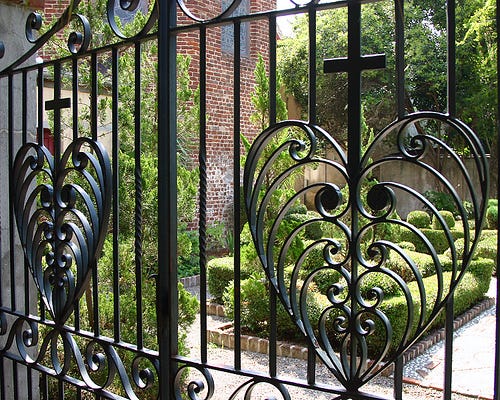
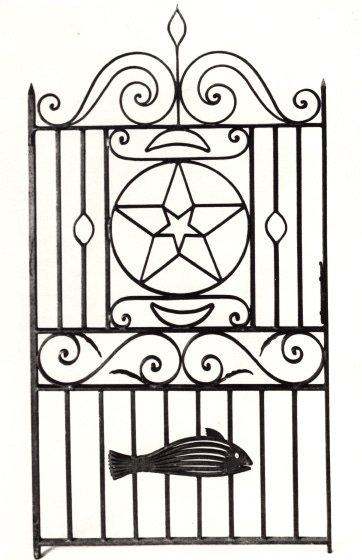

For his contributions to the arts, here are a few of the awards Simmons received in his lifetime:
In 1982, National Heritage Fellowship awarded by the National Endowment for the Arts, which is the United States government's highest honor in the folk and traditional arts
1998 South Carolina Governor David Beasley bestowed the Order of the Palmetto, the state's highest honor, on Philip Simmons
Berkeley County School District honored Simmons by naming three public schools located on Daniel Island, his birthplace, after the artist and educator
At his acceptance speech for his 1982 National Heritage Fellowship awarded by the National Endowment for the Arts, Simmons remarked:
"My instrument is an anvil. I guess some of you have heard me play ... a tune on the anvil, the old blacksmith tune. ... I'm proud of that anvil, really proud. ... That anvil fed me when I was hungry and that anvil clothed me when I was naked. That anvil put shoes on my feet.”
Here is also a lovely video about Simmons’ legacy:
1 ➳ Quote from an SC historical figure
I.
“Being an American by Birth and having also the honor of being the first American who has passed through a regular course of Study of Architecture in his own Country, it is natural for me to feel much Solicitude to aspire to the honor of raising a Monument to the memory of our illustrious Countryman. The Education I have received being all together American and unmixed with European habits, I can safely present the design submitted as American founded upon those general principles prefaced in the description contained in the Book of Designs.”
—Robert Mills, in the accompanying letter from 1814 to his proposal for the Washington Monument
Sources used in today’s newsletter:
I always want to improve my work. Answer the poll below to give me your review of today’s newsletter. I also welcome your suggestions for new content! Simply reply to this email with your ideas. Thank you!




